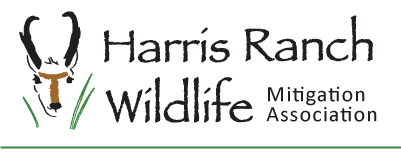
- Home
- HRWMA Weather Station
Weather Station
Harris Ranch Wildlife Mitigation Association (HRWMA) is dedicated to the enhancement of the surrounding Boise Foothills landscape. Thanks to a citizen scientist initiation, Harris Ranch has its very own weather station, so that members can stay tuned into the current conditions. And staying on top of weather conditions keeps us all informed! The threat of fire in the Boise Foothills is highest during the summer months , from June through September. During summer months when moisture levels are low, and vegetation is fully grown and has dried out, vulnerability to wildfires increases as public recreational use is greatest. There is on-going appreciation for the initiative taken by Coleen Decker, a Fire Weather Meteorologist and former homeowner in Harris Ranch. We are all now more informed because of Coleen Decker contributions of knowledge and time in working with the Harris Ranch Wildlife Mitigation Association.
Coleen reflects on the importance of understanding and forecasting weather in the wildland urban interface (WUI) in her own words...
Weather observations from the Harris Ranch Wildlife Mitigation Association weather station are invaluable to the forecast staff at the National Weather Service. In particular, during the fire season, our Fire Weather Meteorology staff monitor conditions in the wildland urban interface (WUI), which includes Harris Ranch. Specific conditions that we are interested in are relative humidity, wind direction, wind speed, dewpoint, and precipitation. In the event of a fire in the area (such as the case with the Homestead Fire of 2005) we will be able to quickly provide a Spot Weather Forecast to Boise BLM dispatchers and on-the-ground operations staff that will help them understand which way the fire will burn and what the fire behavior will be with regard to weather conditions.
During and immediately after the Homestead Fire of 2005, there was a Remote Automated Weather Station (RAWS) placed near Spring Creek to monitor conditions during the vegetation rehabilitation and for precipitation runoff for potential flood control efforts. It was removed in the Fall of 2005.
Since that time, there have been no weather observations taken in the vicinity, with the nearest RAWS location at Lucky Peak Reservoir, which is considerably different terrain and weather. As a Fire Weather Meteorologist and Incident Meteorologist (IMET) for national Incident Management Teams, I thank Harris Ranch Wildlife Mitigation Association for your effort in providing this information so that I can provide a better service to our land management agencies and ultimately for the safety of our residents.
On a personal note, I am a citizen volunteer, weather observer with CoCoRaHS (http://www.cocorahs.org/Content.aspx?page=aboutus). I started down this road as a child, helping my ranching family in Nebraska do the same. Having the ability to share weather information in our community maintains that historical record and is vitally important to our climatology.
I understand there are a number of citizen scientists emerging from our neighborhood, participating in programs such as, the American Kestrel Partnership, sagebrush re-seeding, and Firewise. Now that the HRWMA weather station data is stable and quality-control checked through the Citizens’ Weather Observing Platform (CWOP/MADIS) http://wxqa.com, I am able and willing to field questions from any of these entities regarding interpretation or analysis.
Thank you Harris Ranch Wildlife Mitigation Association for facilitating the link between our neighborhood and the scientific community. This will pay dividends in terms of safety and conservation efforts in the future.
Submitted by Coleen Decker June 2013
HRWMA WEATHER LINK